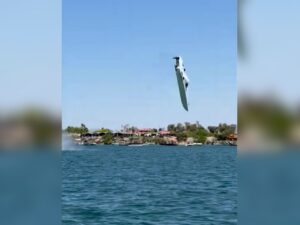Last month, when Eskom CEO Andre de Ruyter gave a media briefing after taking on the role, he made no bones about the enormity of the challenge he faces.
He spoke about a medium-term solution to load shedding, and Eskom later shared information that said the system “will be vulnerable for a period of approximately 18 months”.
Mineral Resources and Energy Minister Gwede Mantashe has also gone on the record as saying he expects load shedding to last two years.
That’s a little longer than many South Africans would have hoped for, but at least it felt like Eskom and Mantashe were putting their cards on the table and being honest about what lies ahead.
If you ask energy advisor Ted Blom, who has become a feature on the likes of eNCA and other media outlets, that’s not the case.
Some of what he had to say on a recent eNCA appearance via MyBroadband:
He said the energy minister is not close enough to Eskom’s operations to know what is going on, and the new CEO André de Ruyter has not been there long enough to make accurate predictions.
“I have gone into the situation at Eskom in detail with an IMF (International Monetary Fund) subcontractor with vast experience,” he said.
“Our estimate is that it will take at least five years under the Eskom scenario of refurbishing the boilers.”
Blom said this means there will be at least five years of load-shedding, adding that this the best-case scenario.
At least five years, and that is the best-case scenario.
According to Blom’s calculations, it will cost a cool R1,8 trillion to turn Eskom around, with corruption and mismanagement having cost the energy supplier around R1,4 trillion thus far.
Here’s the interview with Blom on eNCA:
Looks like Blom and Kobus Wiese share the same barber.
Blom isn’t alone in his naysaying, with energy expert Mike Rossouw agreeing that five years of load shedding is staring us in the face:
Rossouw said poor habits have become the norm at Eskom, and to change this will take time and resources.
The situation is aggravated by design faults at South Africa’s two largest power stations – Medupi and Kusile.
Rossouw said there was not nearly enough engineering design work done before the construction of these power stations, which is now costing the country dearly
The design faults at Medupi and Kusile centre around the height of the large boilers, which should be 142,5 metres, but are only 130 metres.
This means the temperature of the exhaust steam is higher than it should be, damaging equipment and preventing the stations from operating at full capacity.
Again from MyBroadband:
These modifications mean that each of the power generation units at the two power stations will have to be turned off while the height of the boilers is increased, placing further strain on the national grid.
Both power stations were expected to be completed in 2015 when they were first announced in 2007, but De Ruyter has now said Medupi will be completed in 2021 and Kusile in 2022.
Medupi’s total cost has risen from R80 billion to R145 billion, while Kusile’s has increased from R100 billion to R161.4 billion.
It would be so laughable if it didn’t mean that we are plunged into darkness for hours at a time.
Those app notifications have a habit of popping up just when you think you’re out of the woods, too.
[sources:mybroadband&mybroadband]





